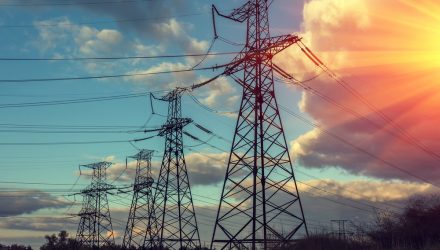Whether it’s protecting against outages during extreme weather scenarios or guarding against cyber threats, the U.S. electrical grid is in dire need of improvements. Experts argue that some of those enhancements can come by way of increased adoption of renewable energy, indicating that the long-term outlook for exchange traded funds such as the SPDR Kensho Clean Power ETF (CNRG) remains compelling.
CNRG follows the S&P Kensho Clean Power Index and holds 43 stocks. Much of the fund’s roster is levered to the renewable energy transition, and some of those companies have inroads to the theme of shoring up electrical grids. For investors considering CNRG, there’s good news. The contributions of renewable energy are rising, and there’s still plenty of runway for growth.
“The contribution from renewables has been increasing steadily since the 1990s, and the rate of increase has accelerated. For example, wind power provided only 2.8 billion kilowatt-hours of electricity in 1990, doubling to 5.6 billion in 2000. But from there, it skyrocketed, growing to 94.6 billion in 2010 and 379.8 billion in 2021,” reported Catherine Clifford for CNBC.
Like other clean tech and green energy assets, CNRG endured a rough 2022 due to weakness in growth stocks — the classification for the bulk of CNRG holdings. However, some industry observers argue that market participants aren’t yet adequately pricing in the benefits of the Inflation Reduction Act, which was passed earlier this year.
Expectations are in place that ETFs such as CNRG and their components will more adequately reflect the perks of that legislation in 2023, particularly if growth stocks rebound.
Another longer-ranging point in favor of CNRG is that adding more clean energy to the electrical grid will require multiple renewables because 100% reliability still isn’t in play.
“One of the biggest barriers to a 100% renewable grid is the intermittency of many renewable power sources. The wind doesn’t always blow and the sun doesn’t always shine — and the windiest and sunniest places are not close to all the country’s major population center,” according to CNBC. “The solution is a combination of batteries to store excess power for times when generation is low, and transmission lines to take the power where it is needed.”
On the surface, that sounds negative, but it’s actually a positive for funds such as CNRG because the SPDR ETF isn’t dedicated to a specific theme, be it wind or solar. Rather, CNRG is a diverse clean tech ETF, confirming it could benefit from a variety of green energy trends in the years ahead.
For more news, information, and strategy, visit the ESG Channel.
The opinions and forecasts expressed herein are solely those of Tom Lydon, and may not actually come to pass. Information on this site should not be used or construed as an offer to sell, a solicitation of an offer to buy, or a recommendation for any product.

